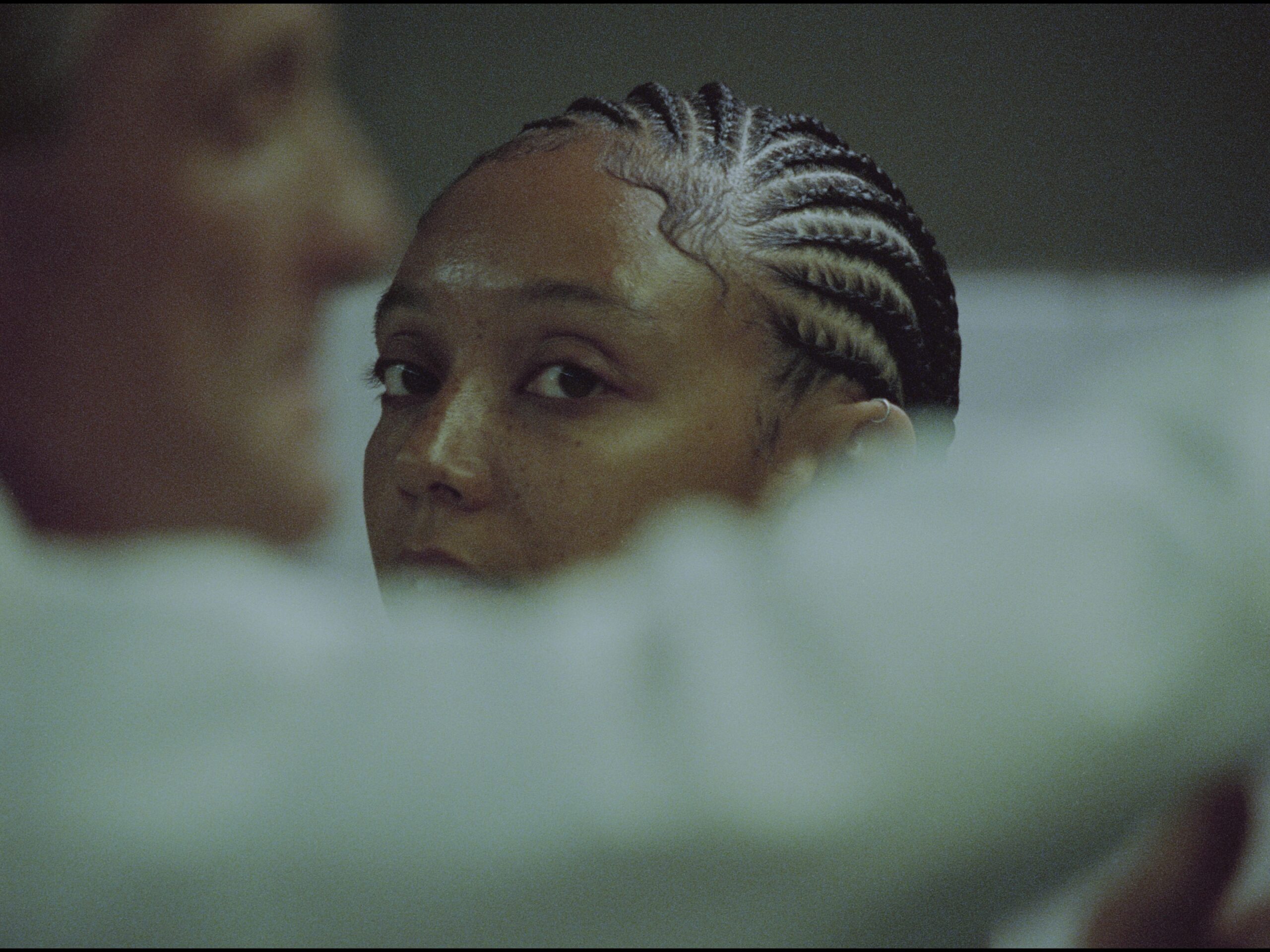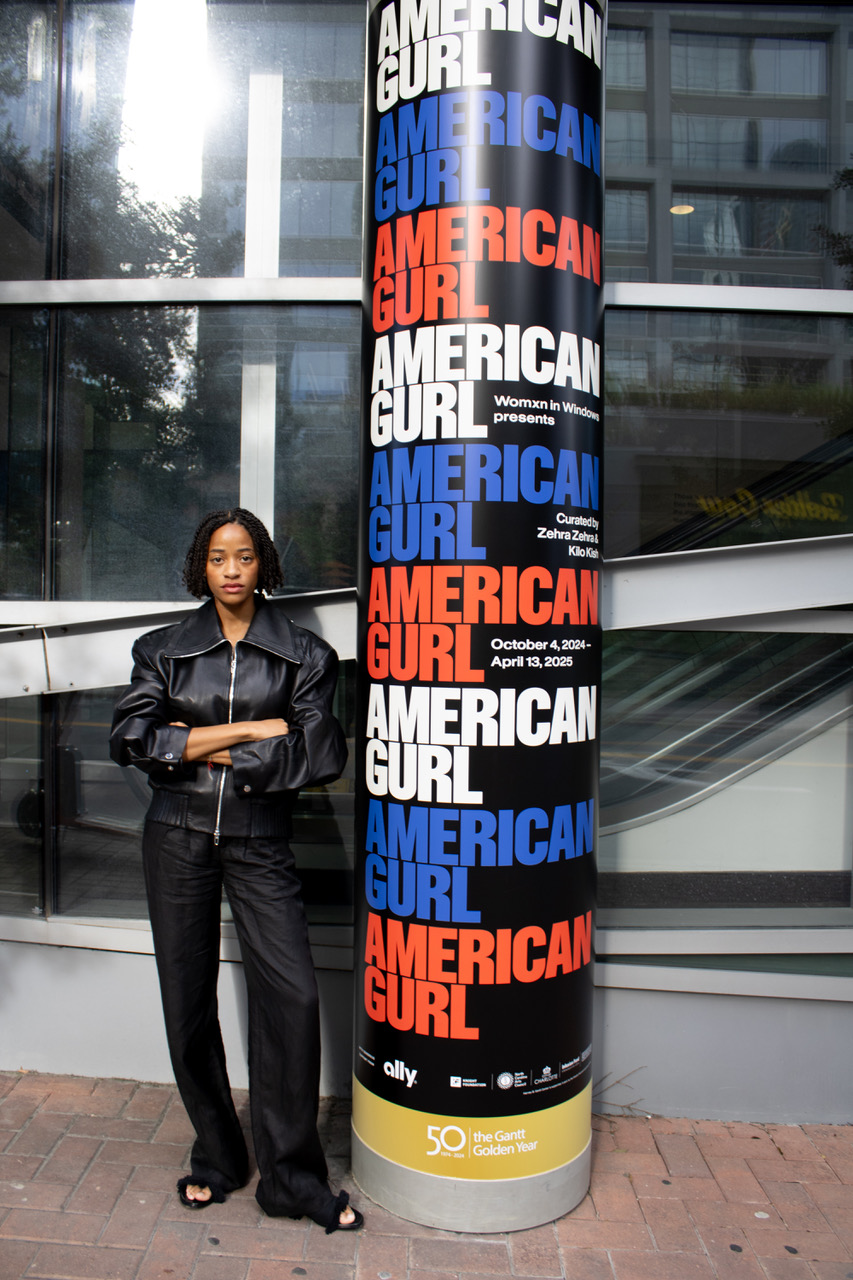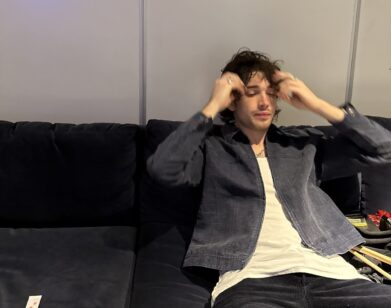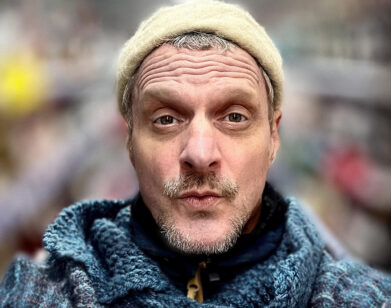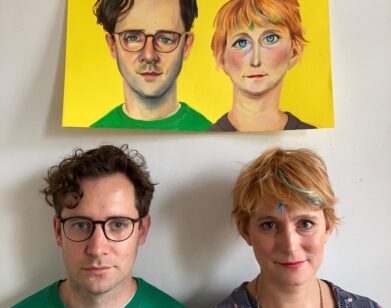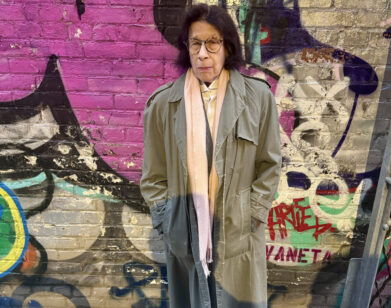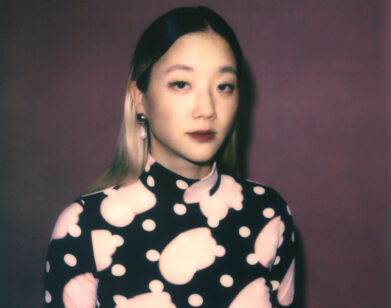IN CONVERSATION
Kilo Kish and Savanah Leaf on Making Art About the American Dream
For Kilo Kish, patriotism is just a medium. The singer-songwriter and artist dropped her album American Gurl in 2022, and since then, she’s been using the motifs of the American dream to guide her exploration of identity, beauty, community, and success, like in her uninhibited, nostalgic video project, Death Fantasy. Last year at Hauser & Wirth in L.A., she co-curated the eponymous group show American Gurl with Zehra Zehra, featuring her film along with video and performance art by Carrie Mae Weems, Martine Syms, and others that dove into the layered emotions of Black American womanhood. And this year, the duo took the show to the road to Charlotte, North Carolina’s Harvey B. Gantt Center for African American Arts & Culture, bringing that collective narration to a place that, to Kish, feels a little overlooked. “The image [of Americana] is pushing up against something else that’s interesting to me. That’s really what we wanted to explore,” she said to Savanah Leaf, director of last year’s BAFTA-winning A24 film Earth Mama and one of the exhibition’s featured filmmakers, when they got together to talk about embracing criticism and the day-to-day endurance of being an artist.
———
SAVANAH LEAF: Well, it’s nice to see you.
KILO KISH: Nice to see you too.
LEAF: I’m so upset that I couldn’t go, but I really want to hear about how the opening went in North Carolina. I feel like the Gantt Center has such a rich history in the community and I’m so curious how it resonated in North Carolina as opposed to downtown L.A.
KISH: I feel like the crowd was obviously very different from the Hauser [& Wirth] show in L.A., but people were really happy and excited that we’re bringing an arts program like that to the Gantt because sometimes, the South feels a little bit overlooked. So I think everyone was really psyched and happy to come and see it. And the opening was great. We had a cool conversation with LaJuné McMillian and Ayanna Dozier about the films and everyone was really engaged. I think that was me and Zehra’s first time doing an institutional show, and especially one outside of a major city like New York or L.A. At the Hauser show, it was a lot of young people and our peers and friends.
LEAF: I’ve got to say, that was one of the most lit gallery openings I’ve been to. The line was insane. It was so long to just go inside. I remember people being like, “Please sneak me in.”
KISH: Yeah.
LEAF: We had a rollerblader in the setting.
KISH: Yeah, Marawa [Ibrahim].
LEAF: And who were the DJs? I forget.
KISH: It was Kitty Ca$h and Quinn Blake.
LEAF: It was so good. And as an artist that you guys selected, and as a new artist in the video art space, I felt really honored to be surrounded by people from all different age groups and experience levels. I’m curious how the idea of American Gurl came about because I was just hyped just to see the list of names when you sent it to me.
KISH: I think the idea for the album came from me being really burnt out on music and questioning my own identity and my place within the industry. So I made an album about that, but through that, I made a series of films that ended up screening at the Times Square Arts Midnight Moment. And that came about because of Zehra who was submitting films for that. When she learned more about what my whole record was about, she was like, “Can we open this up as a curatorial theme?” Since I’m thinking about my relationship to Americana, identity, beauty, wealth, success, and all of these things that we’re all striving for. That’s how the American Gurl show came about. Even for me, like you said, being included in such a rich roster of artists as somebody that comes from the music space is nice. And it’s nice to have documentary work leaning in all these different directions, but somehow they all seem to work together because we’re all adding these different narratives and lenses on what it means to be Black in America.
LEAF: And I think it’s also extremely important—and I haven’t really felt how important it is until post-lockdown—to have physical exhibition spaces bringing people together to watch things. I didn’t realize how important it was to be able to witness art with a group of people, and then to witness other people’s art alongside your own is really powerful. I like the activeness of going into the show and some people are recording the screens, people are sitting weeping, some people are laughing, talking, and all of that is acceptable. There’s something really important about having that forced community experience. I don’t know how else to describe it.
KISH: What I thought was really cool was at the show in North Carolina, an older woman came up to me like, “These films help me to feel free. It’s nice to watch films that make me dream about possibilities that I can still have.” And we got into this conversation and she’s like, “I used to write,” And I was like, “You need to just pull out your journal and get to it.”
LEAF: I just watched your piece that’s in the show again before we got on this call, and there’s something so liberating about it because you’re walking around, no shoes on, munching food, not really caring that you look a little messy, and I love that style of performance. Food might fall out of my mouth though as I’m eating, or snot might drip out of my nose when I cry. It makes me think about not being a perfectly manicured person because no one is. There’s a lot of vulnerability of self portraiture in those pieces, and you’re putting yourself on display in a way that’s really a consistent theme in the show.
KISH: Totally. And that’s something I wanted to ask you about. I want to talk to you about becoming that performer in your own work. Is this the first film where you’ve done that?
LEAF: I was in the [other] documentary I did, but nothing in this way. I think when you asked me to do this show, it felt like a safe space for me to test something out. And I initially did it as a self-portrait out of necessity, because I couldn’t cast in time and I wanted to make something new for the American Gurl Hauser & Wirth show. But then at that time I was releasing my movie, and there’s a lot of politics involved in releasing a movie. And I needed something to just come out of me. It ties into my sports background, and it ties into being a Black woman, in oftentimes white male-dominated spaces. I needed somewhere to throw up my experience. I needed to unleash this thing that I was feeling pent up in my body.
KISH: I get it. There’s nothing contrived about that performance. The film is so slow, it just forces you to lock in. And you don’t stray away. You don’t cut. It’s like we’re locked in on you the entire time. And so for me personally, every single time I watch the full film, the score is so mellow and entrancing that I’m forced to focus, and every single time I watch it, I cry. It just speaks to me in terms of the sheer exhaustion.
LEAF: Yeah.
KISH: I resonate with that film so much because it’s the day to day grind of trying to make things happen. And I think that’s the endurance part of being an artist that is rarely seen. It’s like, one step forward and I run, then step back. It’s the exhaustion and also the feeling of being on display for these audiences that, like you’re saying, are not always safe spaces.
LEAF: It’s so interesting because I know I’m tapping into my sports background in that film, but I do feel the same in art. You’re on display, showing your work, pushing all these political spaces and trying to move ahead, but oftentimes getting setbacks and you just have to keep going and don’t really have any time to just process what you’re going through because otherwise you’ll backtrack even further.
KISH: And in the film you’re running fast towards something, but there’s also this fear in your eyes. As an artist, you don’t have any guarantees. It’s one of those things where you’re running full speed towards something, but you’re like, “This could completely fail, or I could completely fuck myself.”
LEAF: I love how Zoom gave you a thumbs up for that.
KISH: [Laughs] You just don’t have any guarantees. But there’s this need to continue going forward because how else would you live your life? I think that’s cool.
LEAF: No, it’s true. I sometimes think about that like, “Okay, I’ve been running for a while and I’m not getting to the place that I want to get to, so does that mean I should turn to another direction?” But there’s no direction I want to go in other than this direction. It just feels like the path is an infinite length ahead of me.
KISH: Coming back to what you were saying about sharing work in physical spaces, for me, installations give you an opportunity, like you said, to reflect and sit with the things that you’ve made and process them around people. So it’s not this cerebral dream world that you’re living in, I think. Sometimes as an artist, we can be in our own [world], so you [need to] actually be able to step out of that.
LEAF: I love what you said about the safeness of that space. I guess because you leave things up to the audience a little bit in these pieces, it feels safer being in there. Sitting there and watching the people around you experience your piece, even if they left in the middle of it, all of a sudden, I’m not worried about those people.
KISH: Exactly.
LEAF: A conversation is very much invited. When I went to the one in Hauser & Wirth, you’re just conversing with all these people that witness your piece from all different walks of life. And I don’t get that as much in film. When I walk away from Earth Mama in theater, sometimes I’m like, “Let me just leave as quickly as possible because I don’t think I want to hear people’s critiques of my film.” And to be involved in a project like this, I feel very honored because it really has opened my mind to a whole other layer of art making.
KISH: Me too.
LEAF: Even for this piece. I self-funded it with my partner and my team, and it was the first time I felt ownership over my art.
KISH: It’s nice to know that not everything is this competition. We can also just share our work together and let people interpret those as they will.
LEAF: Exactly.
KISH: I agree because this is not my “primary medium,” but in music, it’s the same. You can own your masters and things like that, but to self-fund a whole project is quite hard. And the landscape of music is so open to critique. It’s expected that you’re going to get your reviews. And I know that art is the same way for people that are only in the art world. But I think because we’ve found this loophole—
LEAF: It feels different.
KISH: Yeah.
LEAF: I crave that feeling. I don’t make this for the critique. I make this for people to feel less alone in whatever journey. I want people to feel less alone when they watch my pieces. I don’t want them to start analyzing every little detail. I want them to be so taken with the emotion they’re having that they don’t even think about that stuff. But that’s a hard thing to do.
KISH: Totally. And I think that’s why the films are so nice together, because we have some that are a little bit more political in nature. And Carrie Mae Weems’ film is fun like Marvin Gaye music, and it’s about women feeling good about themselves. And I think my film is a bit cheeky and serious, but it’s also taking the piss at the same time.
LEAF: But also, “I have a death fantasy” is such a statement.
KISH: But it’s funny. People are always like, “Whoa, what is the song about?” And I’m like, “It’s actually a really happy song.” It’s essentially my declaration of personal independence, and it’s a song about me killing off the things that I don’t feel like are me anymore. It’s about shedding aesthetics, shedding my need to even present as an artist, just letting it all go, and I’m just a girl here.
LEAF: I feel like everybody has a story. Everybody could be an artist in different forms. And I love what you just said about shedding off the need to be portrayed as an artist.
KISH: That in itself is exhausting. Or needing to seem intelligent or highbrow or cultured. I think that’s also very internalized within Blackness because in the past, we weren’t given these opportunities. But now, I don’t care. If I say something stupid, I say something stupid. I just want to be able to live.
LEAF: I get that too. Even in art, someone the other day asked me what grad school I went to when I was showing a piece at an exhibition space, and I was like, “Damn, do people care?” I didn’t go to Yale or whatever. I didn’t go to these schools that other people went to. And I started freaking out in my head, but then I just got to a point like, “Wait, why does any of this matter?” It’s a really liberating feeling to stop shedding this preconception of who I should be in order to be in this space.
KISH: Totally.
LEAF: I remember thinking, “Could I ever have a video or a piece in a space because I haven’t done the checklist that other artists have done? Is it possible?” So you inviting this group of people from all different backgrounds into the Hauser & Wirth Gallery was really empowering, because you don’t need that in order to make art that resonates with people.
KISH: We’re really thankful to Hauser for even trusting us because we had never done a project on that scale before.
LEAF: So how did you get to the Gantt Center from Hauser & Wirth? And what is the next thing?
KISH: Basically, Leandra [Juliet Kelley], who was a curator over at the Gantt Center, saw the show at Hauser, and she was like, “Can we bring this to North Carolina?” And we’re like, “Just as it is?” And she’s like, “Exactly.” I think the only thing that changed was we designed different seating for it, but we were so happy to have all the films running the way that they were at Hauser. Me and Zehra have a bunch of ideas, and we want to eventually turn the concept into a yearly festival where we’re screening films, having performances, and having talks. And then we have an idea of where the American Gurl show is going next year, but it’s still in the works.
LEAF: I’m excited to learn where it goes next. It’s interesting because it’s called American Gurl, but I think these pieces are so relatable and applicable globally. I’d be so curious to see how people respond to it outside of the U.S.
KISH: Exactly. That’s one of our big goals. I think in America, we’re so used to our own history and our own cultural dynamics and ideas of identity, and I think this show tackles that.
LEAF: Yeah. I was born in London and I grew up half my life in the UK, and then I became a citizen of the U.S. around five years ago, so I have a different relationship to America. I had to fit in and figure out my version of an American girl, and whether I fit into the model or stand out. I remember I lost my British accent within six months because I was just like, “I need to fit in.”
KISH: It was something you actually actively tried to lose?
LEAF: It wasn’t, but I am sure my body and my bones were just like, “You need to lose it.”
KISH: Assimilate, yeah.
LEAF: And at the time, you also stood up for the Pledge of Allegiance every day. And I remember as a kid, I was just like, “What the fuck are we doing? Why are we standing up and doing this pledge?” They got so mad at me for not putting my hand on my heart because I was like, “Who am I pledging to?” I just didn’t understand at that age.
KISH: That’s why we went so on the nose with the space. There’s stars, there’s stripes, there’s all of this fanfare that is Americana. The benches are red and blue and white, and there’s silver stars as you’re watching the film, and the room is quite dark, that are shimmering and reflective. I remember when I first was like, “I’m going to call the album American Gurl.” People were like, “What?” And it makes sense because obviously it’s not a patriotic album at all, but people were like, “Are you going to identify like that?”
LEAF: It’s not the image that we’re thinking of.
KISH: Exactly, the image is pushing up against something else that’s interesting to me. That’s really what we wanted to explore, and you can take what you will from it.
LEAF: Absolutely.



